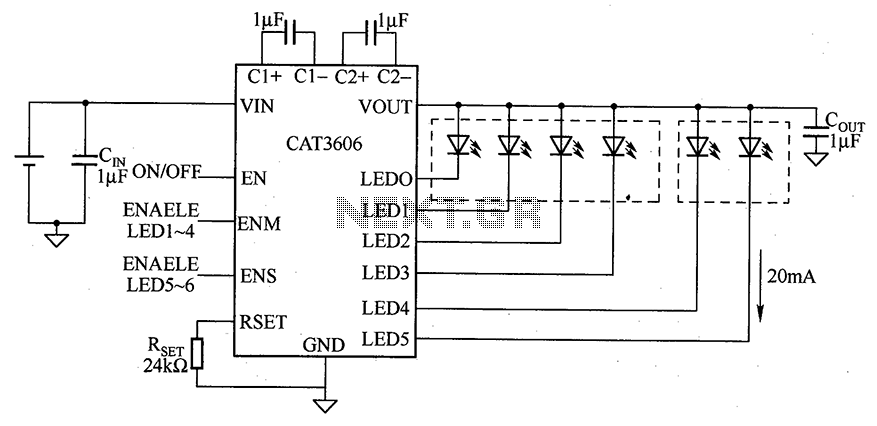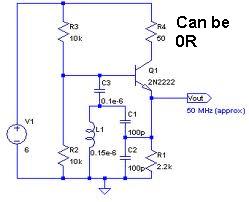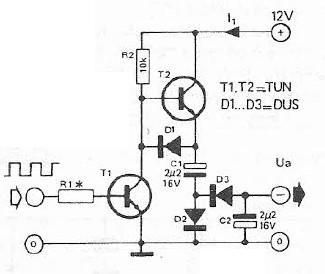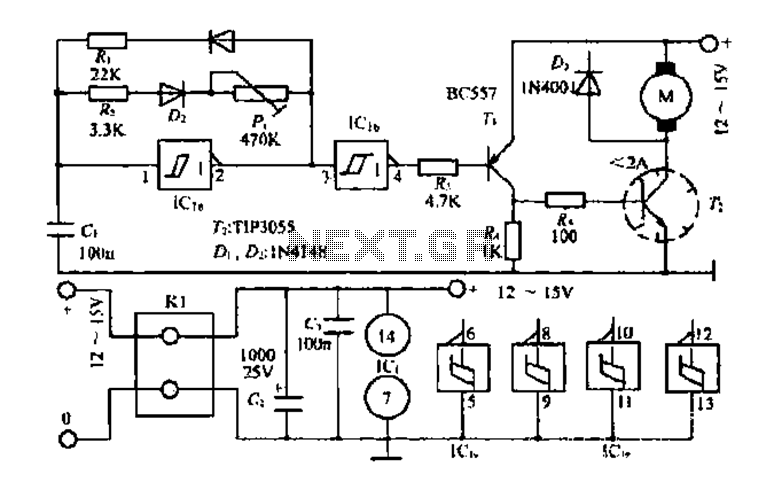
Wideband Preamp Circuit
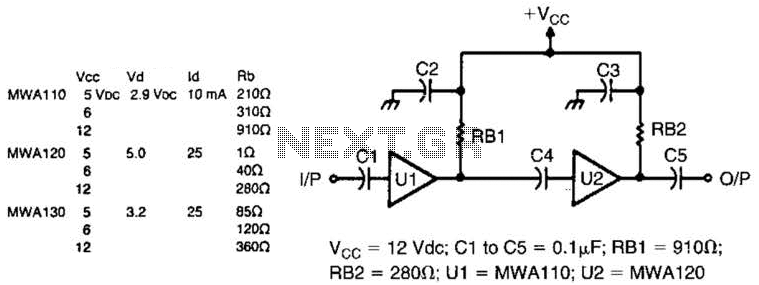
Motorola MWA 110, 120, or 130 are wideband amplifier ICs. This wideband preamp circuit can be used in many applications. Keep the leads short when constructing the circuitry. PC board layout (shading represents copper) and parts layout. X is the feedthrough wire to the ground plane. All capacitors are 0.1 uF. More: Keep all leads short.
The Motorola MWA series, specifically the MWA 110, 120, and 130 wideband amplifier integrated circuits (ICs), are designed for high-frequency applications requiring low noise and high gain. These amplifiers are particularly effective in situations where signal integrity is paramount, such as in RF and communication systems. The wideband preamplifier circuit utilizing these ICs is versatile and can be adapted for various applications, from audio processing to signal conditioning in telemetry systems.
When constructing the circuit, it is crucial to minimize the length of the leads connecting the components. Short leads reduce parasitic inductance and capacitance, which can adversely affect the performance of high-frequency circuits. The printed circuit board (PCB) layout is an essential aspect of the design, where the copper shading indicates the areas of copper traces that connect the various components.
In this configuration, a feedthrough wire labeled 'X' is employed to connect to the ground plane, ensuring a stable reference point for the circuit and helping to mitigate noise. The choice of capacitors is also significant; all capacitors in this design are specified as 0.1 µF. This value is commonly used in RF applications due to its effectiveness in bypassing high-frequency noise while maintaining signal integrity.
The overall design emphasizes the importance of a well-thought-out PCB layout and component placement to achieve optimal performance of the wideband amplifier. Proper grounding techniques, including the use of a ground plane and short lead lengths, are critical to minimizing interference and enhancing the reliability of the circuit in real-world applications. Motorola MWA 110, 120, or 130 are wideband amplifier ICs. This wideband preamp circuit can be used in many applications. Keep the leads short when constructing the circuitry. PC board layout (shading represents copper) and parts layout. X is the feedthrough wire to the gound plane. All capacitors are 0.1 uF. Keep all leads short.
The Motorola MWA series, specifically the MWA 110, 120, and 130 wideband amplifier integrated circuits (ICs), are designed for high-frequency applications requiring low noise and high gain. These amplifiers are particularly effective in situations where signal integrity is paramount, such as in RF and communication systems. The wideband preamplifier circuit utilizing these ICs is versatile and can be adapted for various applications, from audio processing to signal conditioning in telemetry systems.
When constructing the circuit, it is crucial to minimize the length of the leads connecting the components. Short leads reduce parasitic inductance and capacitance, which can adversely affect the performance of high-frequency circuits. The printed circuit board (PCB) layout is an essential aspect of the design, where the copper shading indicates the areas of copper traces that connect the various components.
In this configuration, a feedthrough wire labeled 'X' is employed to connect to the ground plane, ensuring a stable reference point for the circuit and helping to mitigate noise. The choice of capacitors is also significant; all capacitors in this design are specified as 0.1 µF. This value is commonly used in RF applications due to its effectiveness in bypassing high-frequency noise while maintaining signal integrity.
The overall design emphasizes the importance of a well-thought-out PCB layout and component placement to achieve optimal performance of the wideband amplifier. Proper grounding techniques, including the use of a ground plane and short lead lengths, are critical to minimizing interference and enhancing the reliability of the circuit in real-world applications. Motorola MWA 110, 120, or 130 are wideband amplifier ICs. This wideband preamp circuit can be used in many applications. Keep the leads short when constructing the circuitry. PC board layout (shading represents copper) and parts layout. X is the feedthrough wire to the gound plane. All capacitors are 0.1 uF. Keep all leads short.

